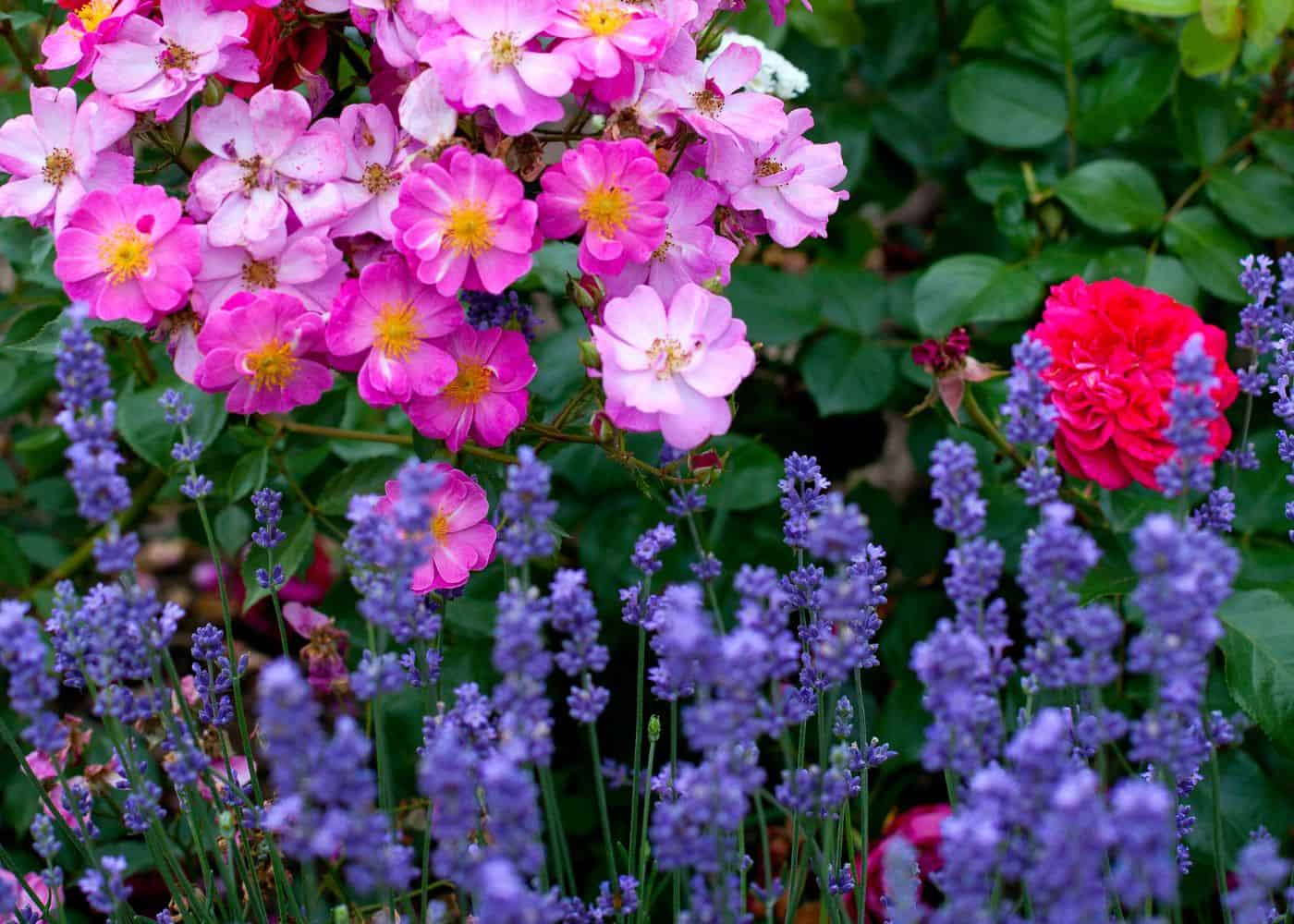With its fragrant blooms and natural pest-repelling properties, lavender stands as a formidable ally in the garden. Let’s look at the art of companion planting with lavender as our guide.
1. Roses
Roses are the perfect choice as companion plants for lavender. Rose bushes thrive in many different conditions and will do well almost anywhere you plant your lavender. Roses require a little more water than lavender, so be sure to space them out just a little so you can hand water the roses more often.
Plant some colorful shrub roses near your herb garden and attract butterflies and other wonderful pollinators. Plant lavender and watch the butterflies flock for miles. Here are some popular lavender varieties to plant.
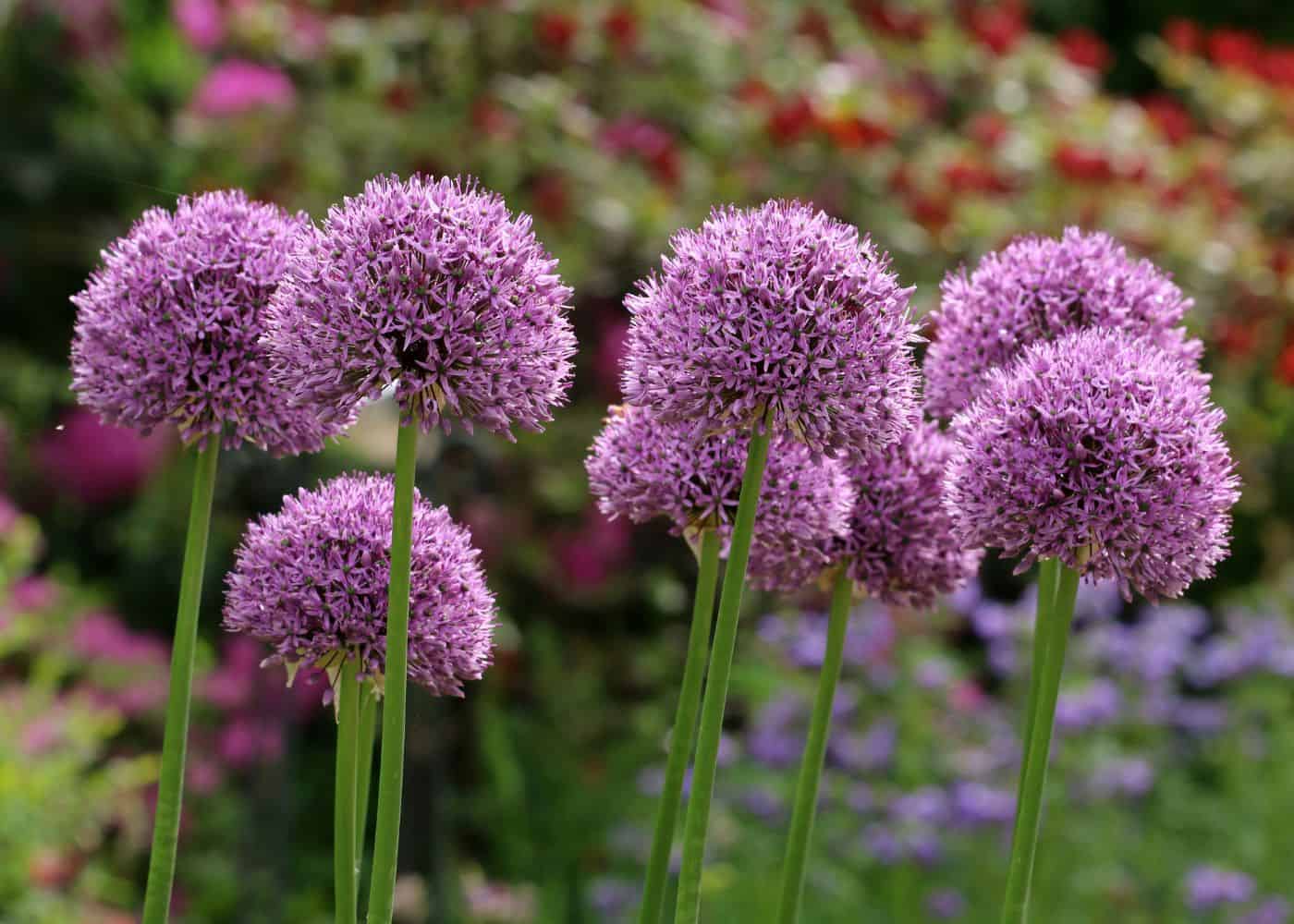
2. Alliums
Lavender plants have shorter stems, leaving plenty of room to grow tall plants like Alliums. This height difference will make a lovely comparison in your flower garden. Alliums and lavender look well together as garden borders or in pots. Both of them require full sun and little water. They also both enjoy sandy soil, making it convenient to plant them together in garden beds.
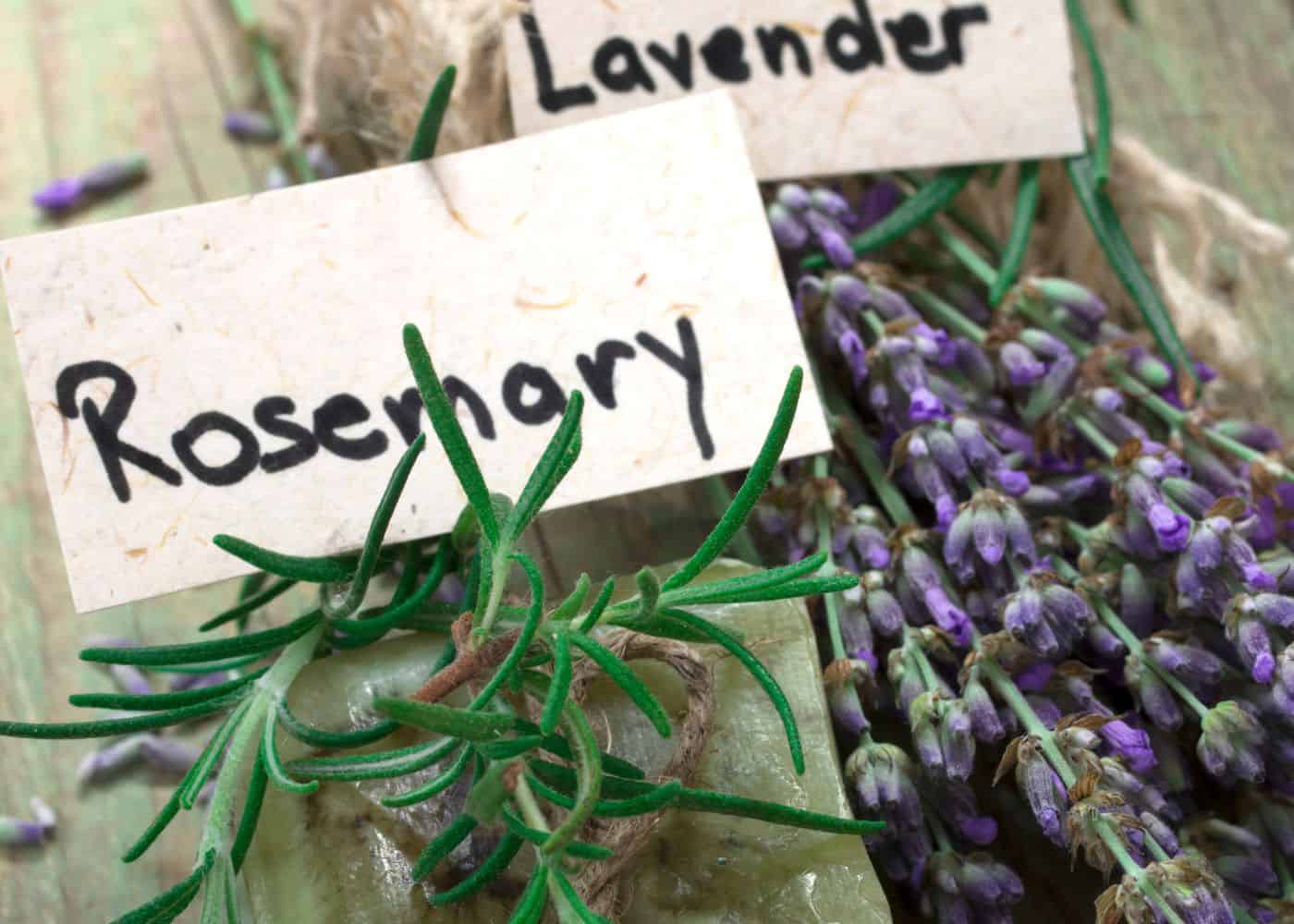
3. Rosemary
Rosemary and lavender make a classic pair. Adding rosemary to your herb garden will expand the herbs you can use in your cooking. If you are trying to expand your already existing lavender garden, rosemary is a great option because it isn’t very bothered by existing plants.
Both lavender and rosemary attract beneficial insects and pollinators. They also deter deer and rabbits, keeping them away from valuable plants that aren’t as highly scented.
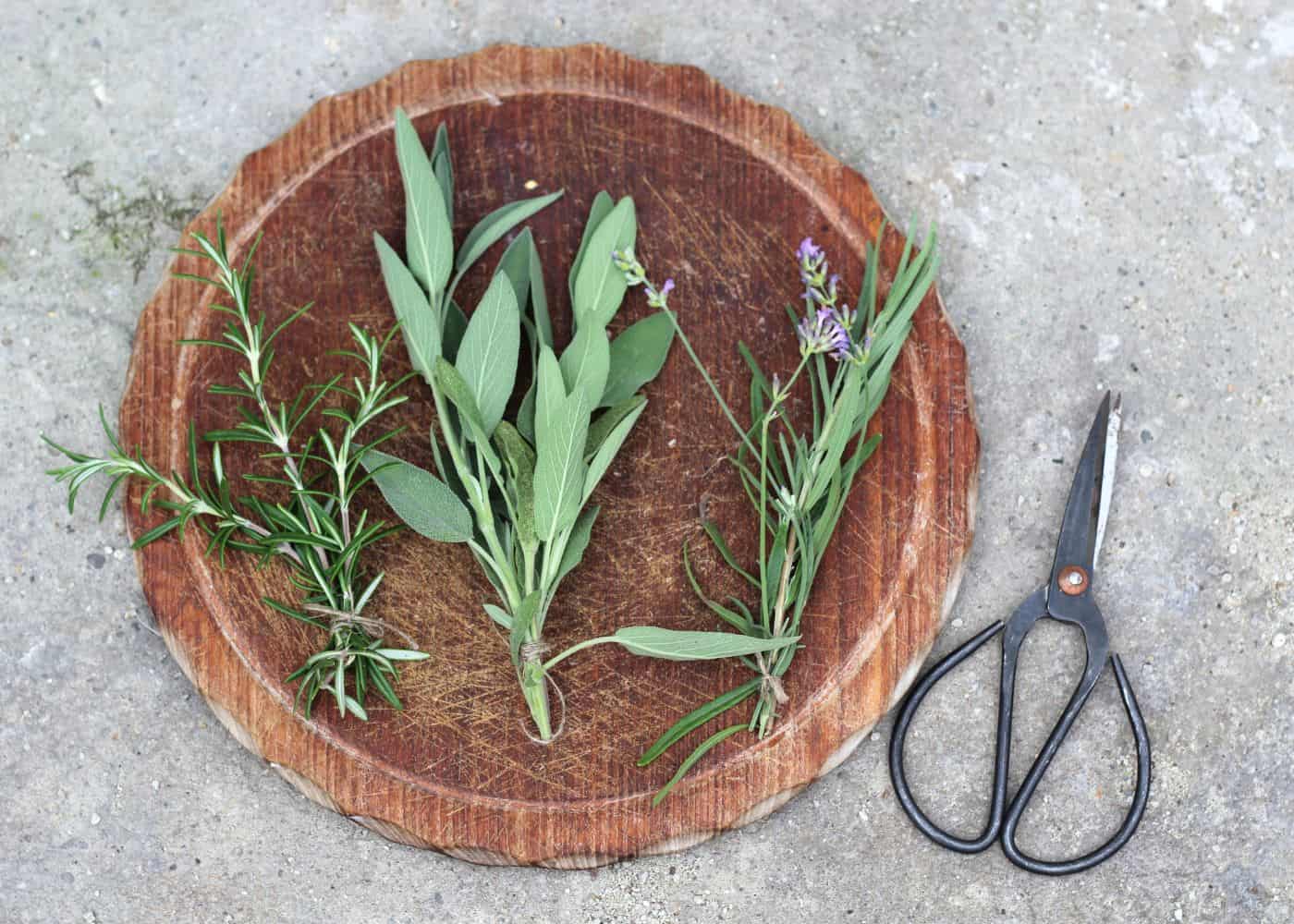
4. Sage
Sage and lavender both thrive in similar conditions, and sage plants make perfect lavender companion plants. Sage thrives in hot climates with sandy, well-draining soil and requires little watering. It’s an easy plant to take care of.
Thyme, sage, and lavender plants make a lovely group to plant together, especially if using pots or large containers. Sage makes a really pretty border plant as well. Plant lavender and other herbs in your herb garden and watch them thrive. These are all great lavender companion herbs.
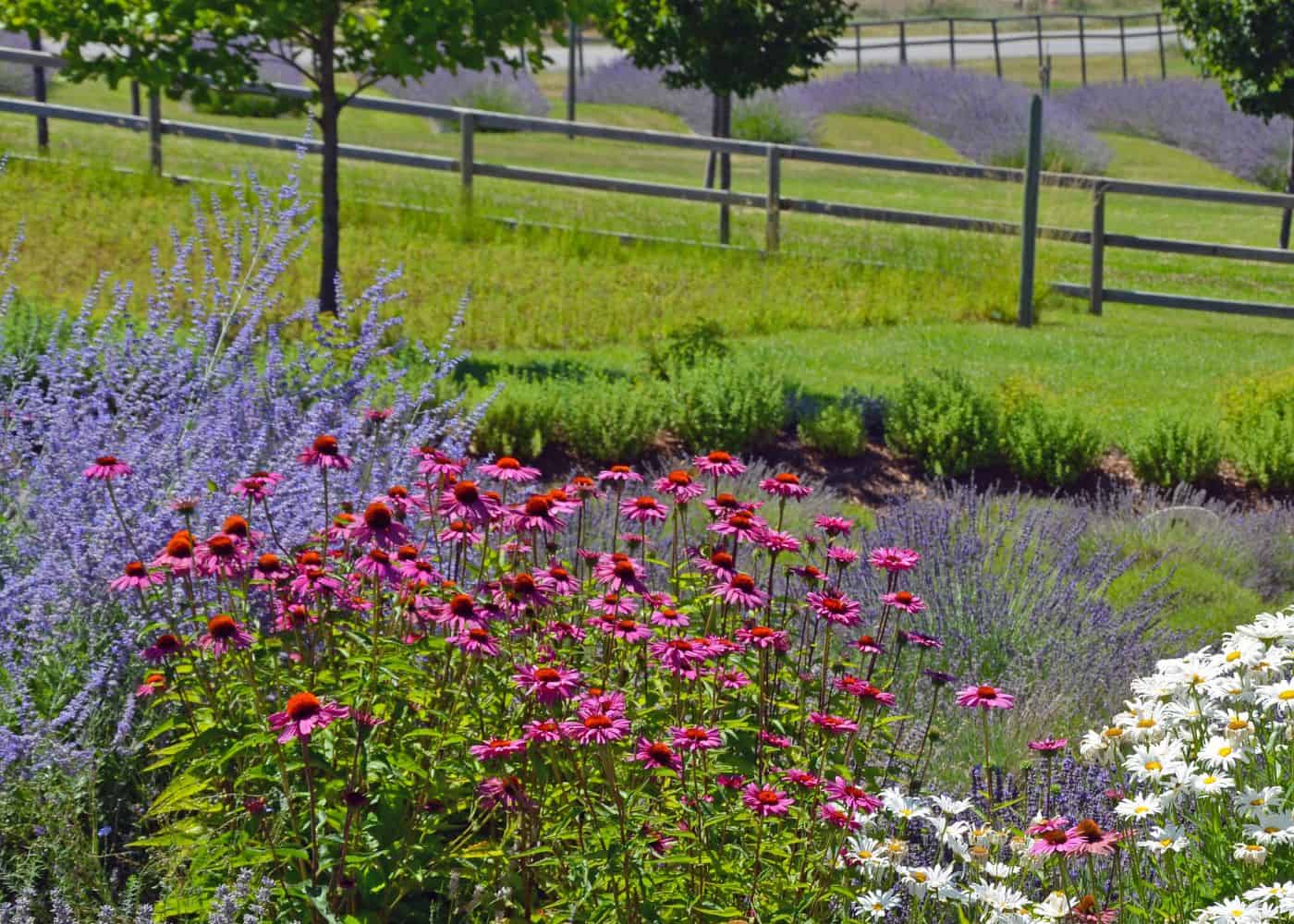
5. Coneflower (Echinacea)
Echinacea are lovely lavender companion plants because they look very nice sitting next to one another. They both thrive in similar conditions and require the same amount of sunlight. You can plant them in the garden together, but be sure to water the Echinacea a little more than your lavender for the best blooms.
Both plants require well-draining soil to produce their beautiful blooms. Once fully grown, you’ll have a lovely purple and lilac-filled garden.

6. Apples
Lavender is great when planted under apple trees because it helps deter codling moths that like to eat the fruit of the apples. It is also said to protect nearby plants from whiteflies. Planting lavender near apples will ensure you have healthy fruit trees and blooms.
Apple trees and other fruit trees make great lavender companion plants for the spring and fall seasons. Companion planting lavender is a great choice for fruit tree protection.
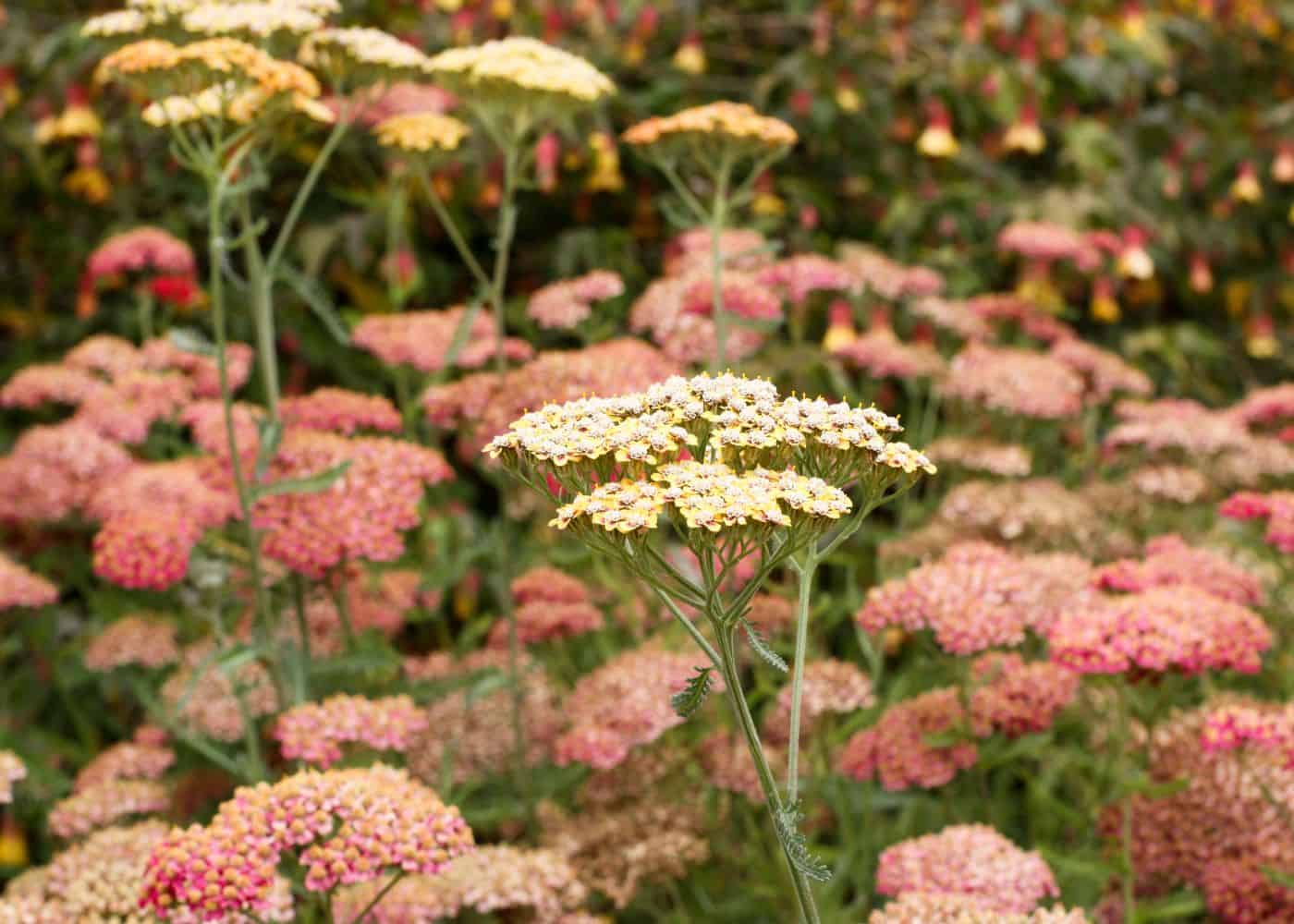
7. Yarrow
Yarrow is a lovely perennial plant that does well in poor soil. Most types of yarrow are white, but you can also buy pink, red, or white cultivars.
Yarrow is extremely drought tolerant. The lavender plants can take up as much water as they want, as the yarrow doesn’t require much. They make great lavender companion plants for any time of year.
Sometimes considered a weed, this plant overgrows into tight spaces, especially in nutrient-rich soil. Just like lavender, this plant requires full sun. Paired with the pale purple of lavender, the yarrow makes a beautifully colored garden.
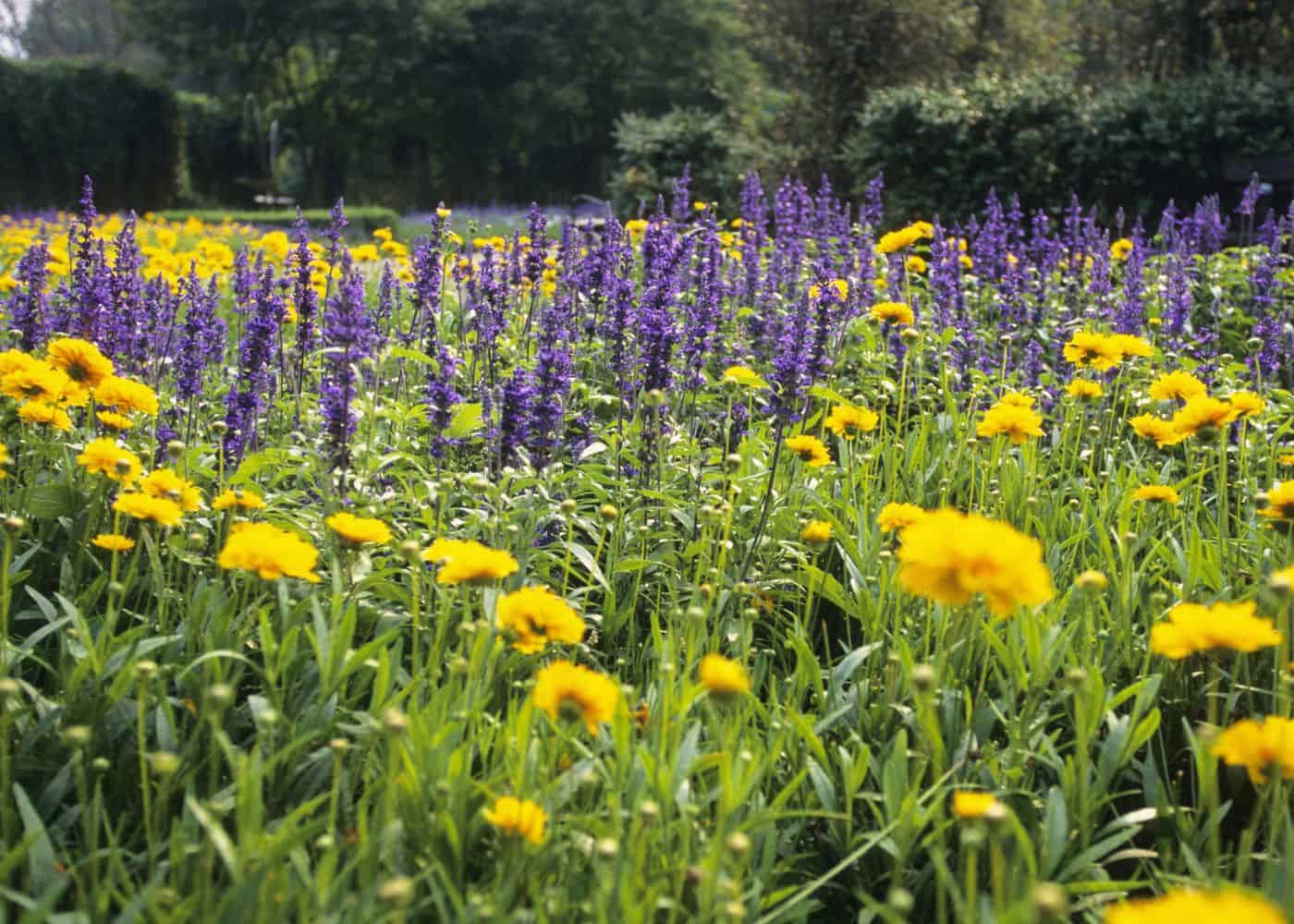
8. Marigold
Marigolds are an easy starter plant if you don’t have much experience in the garden. They are easy to care for and beautiful to look at. They are great companion plants for lavender because they deter pests wanting to eat it. They do, however, attract beneficial insects like bees and ladybugs.
The brightly colored flowers are a fantastic companion plant for lavender. The lavender flowers will look so nice against the bright colors of the marigolds and other plants.
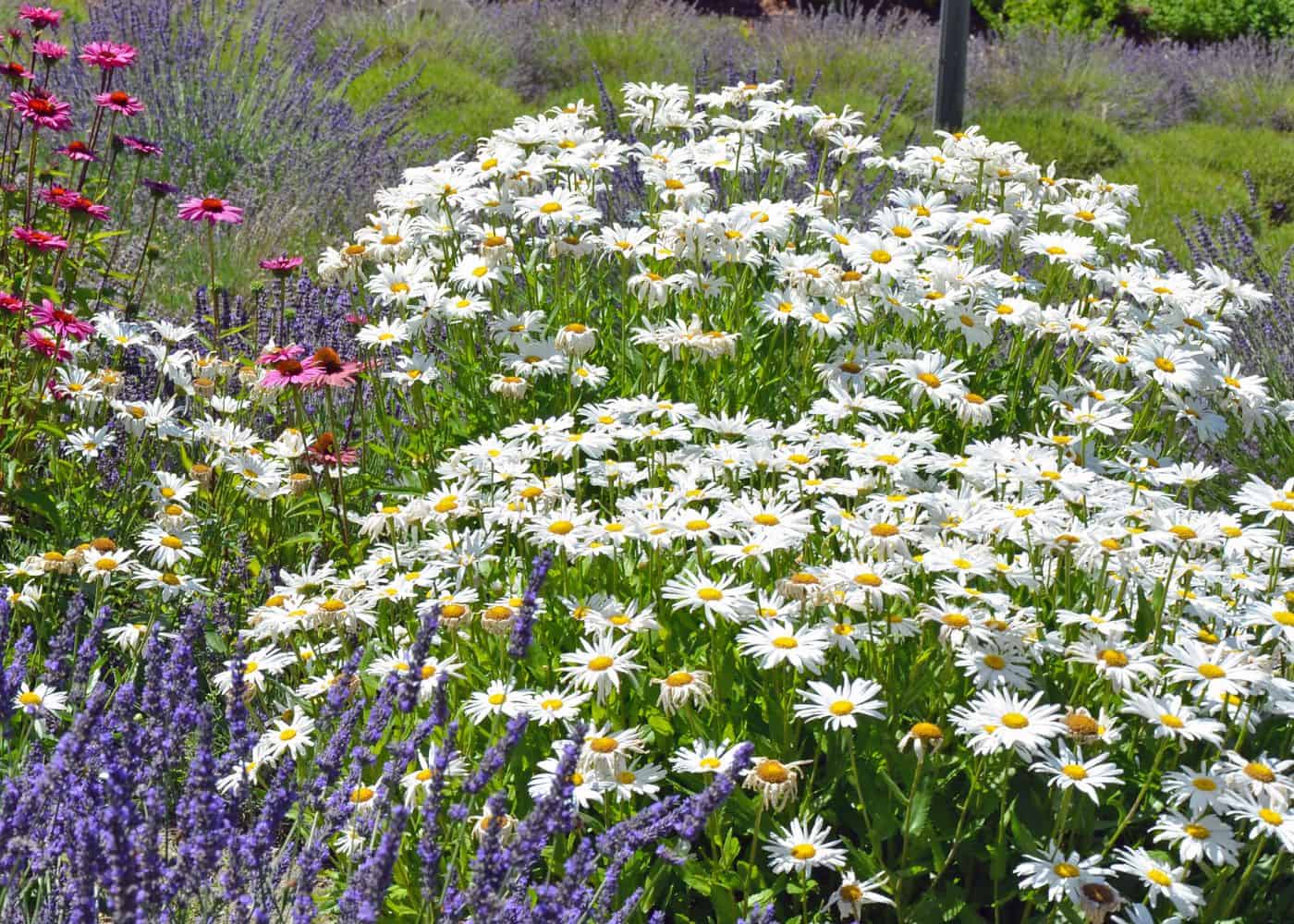
9. Shasta daisy
The shasta daisy is a low-maintenance plant that has gorgeous blooms. These blooms will accept your purple lavender spikes with their white and yellow flowers. Just like lavender, they love full sun. They do well in hot and dry weather and require similar amounts of water to lavender.
Lucky for gardeners, shasta daisies don’t require much maintenance and are great for the “lazy gardener.” There aren’t many diseases or pests that threaten them but attract pollinators like bees. Nearby lavender plants will thank you.
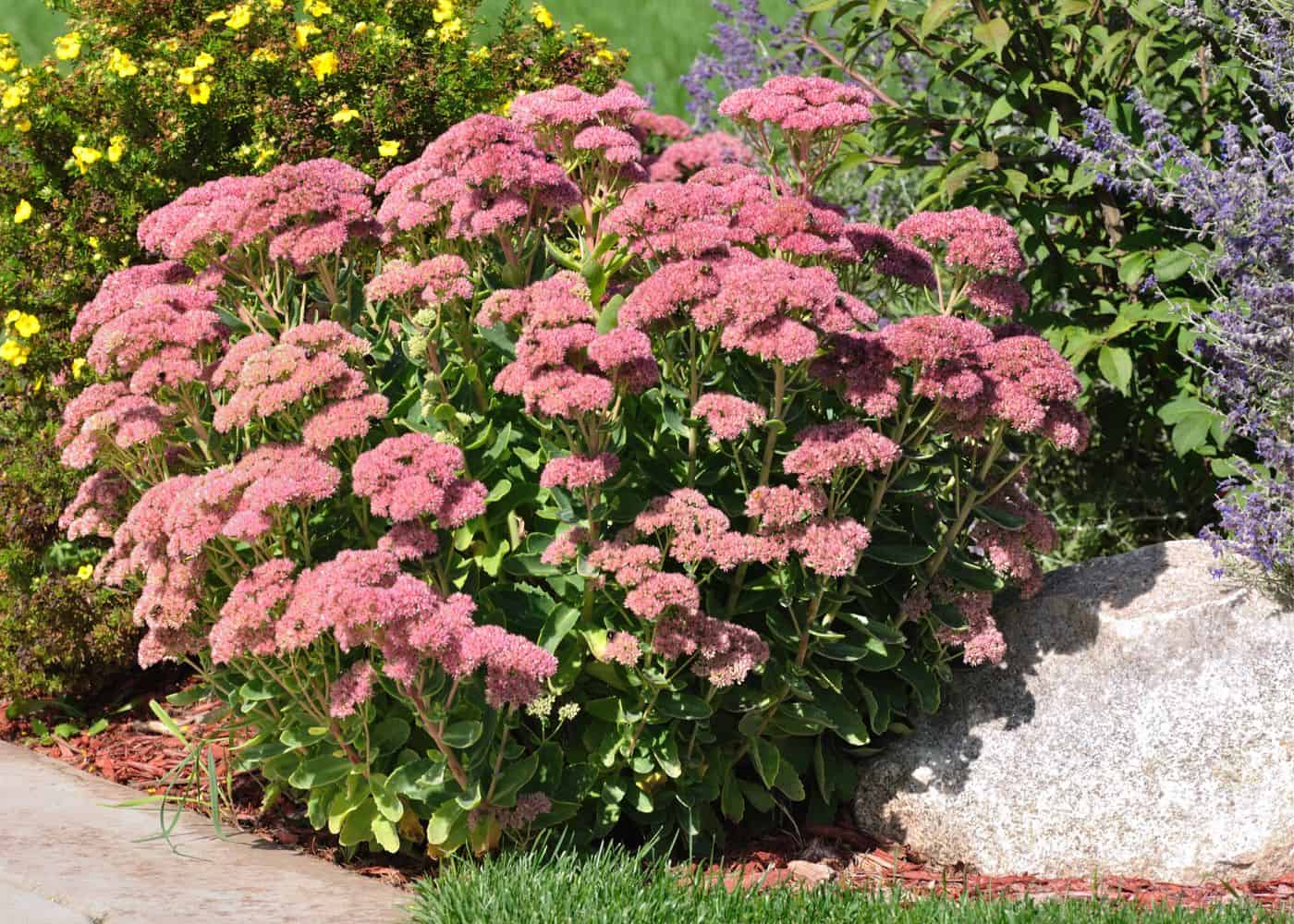
10. Sedum
Sedum comes in various colors (pink, red, white, and more) that will look stunning against your lavender plants. This lovely lavender companion plant thrives in full sun and can tolerate rocky or sandy soil. It is very low maintenance, just like lavender. Everyone loves a garden they don’t have to tend to very often!
Growing lavender has never been easier when paired with sedum. It’s one of the best lavender companion plants and is super easy to manage.
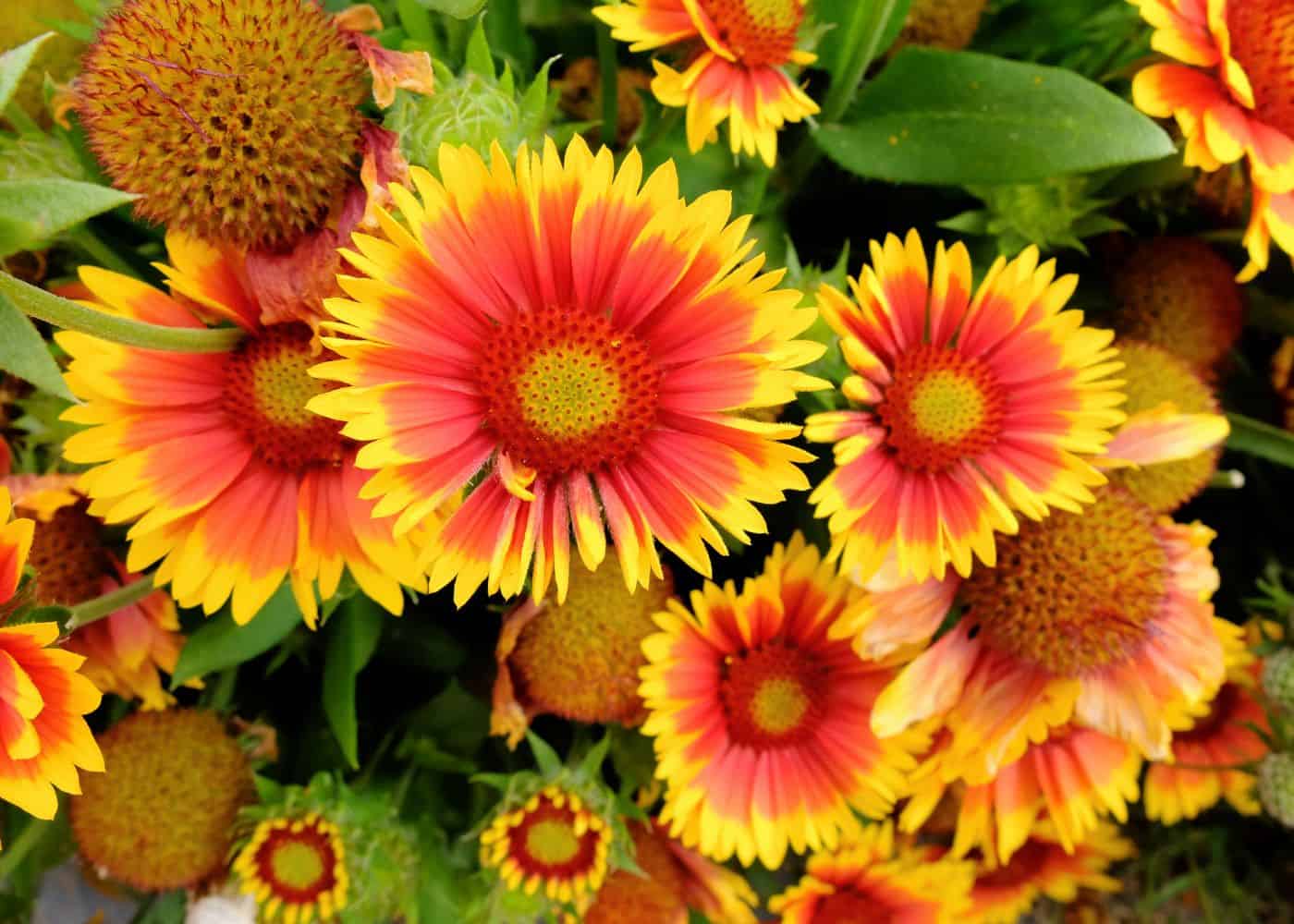
11. Blanket Flower (Gaillardia)
This daisy-like flower will grace your garden when paired with lavender. They are great lavender companion plants that come in beautiful shades like burnt reds, oranges, and bright yellows. These bright colors will look wonderful against the pastel colors of your lavender.
These pretty flowers bloom annually in summer and fall, bringing some lovely color to your lavender garden. Growing lavender will be a breeze with these drought-tolerant flowers.
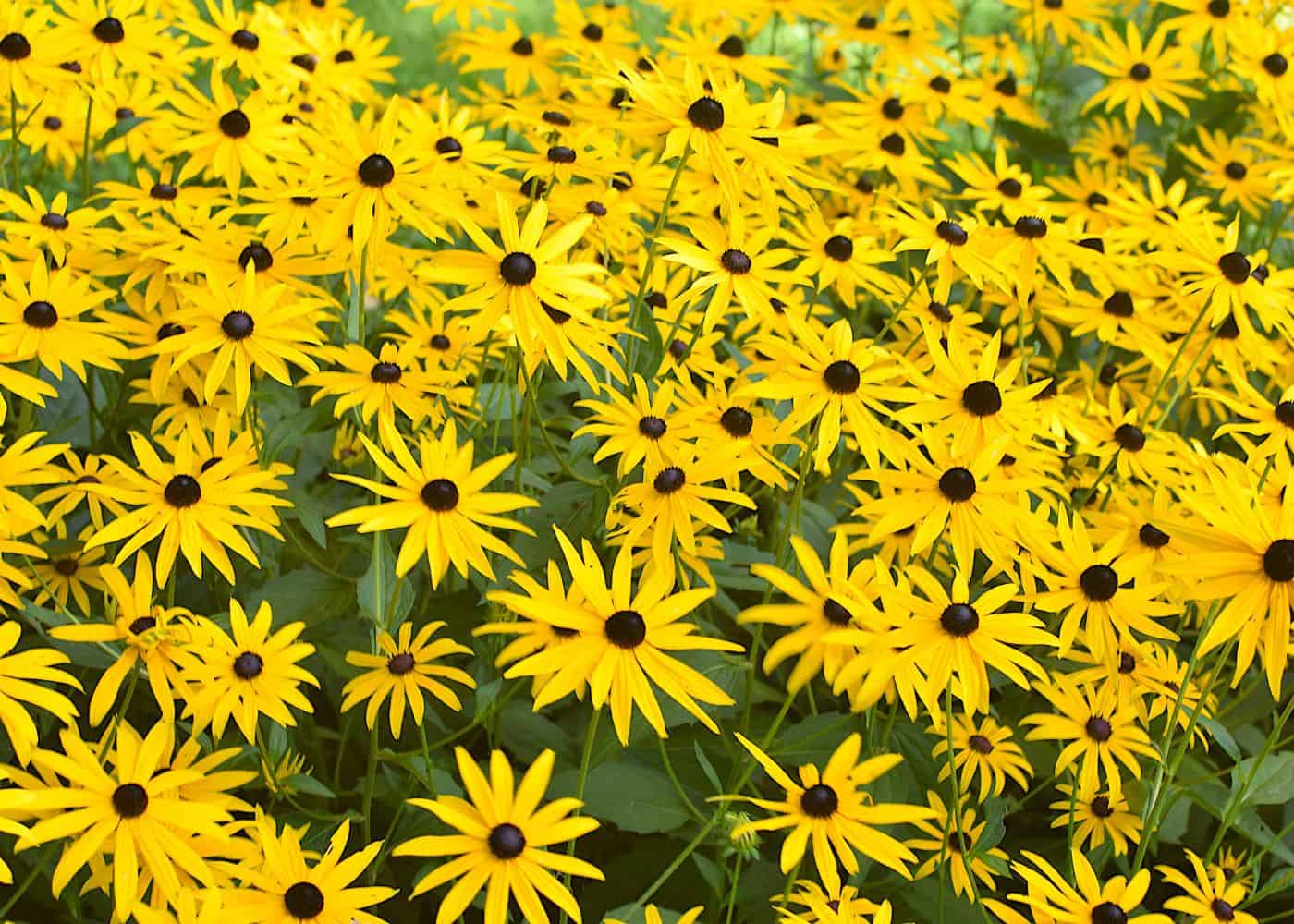
12. Black-eyed Susan (Rudbeckia)
The Black-eyed Susan pairs very nicely with lavender plants and is extremely popular among bees and other pollinators. The beautiful yellow petals look wonderful paired with the purple lavender. Both are easy to grow in well-draining soil and dry conditions. Add Rudbeckia to your garden for a pop of color among your lavender.


